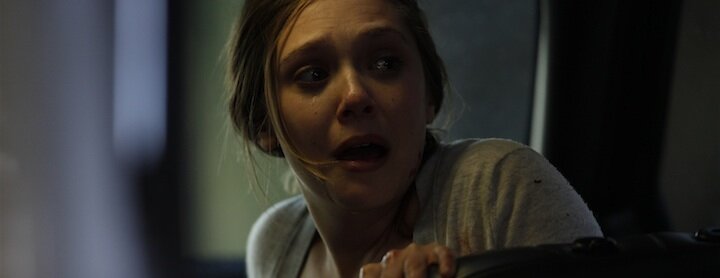Login
iFlicks on Twitter
| Take One: Cinema’s longest tracking shots |

|

|
| Written by Ivan Radford |
| Friday, 04 May 2012 08:58 |
|
Long before I saw Silent House (out today in the UK), while hiding from the real world behind books and exams, I wrote an incredibly geeky thesis on the relationship between text and screen, which postulated that: given sentences on the page are the equivalent of takes on film, linguistic analysis of voice and narrative in a novel (and a script) could be related directly to the positioning of a camera in a cinema adaptation. Because unlike literature, which can roam wherever the heck it wants, video cameras are physical and must be placed somewhere: films inherently have a perspective, which means that every shot is actively positioning the audience. That’s why first-person POV is such an interesting choice, not to mention the more subtle decisions about the camera's proximity to the people on screen – the choice, for example, to only show scenes that contain a specific character. But arguably the most curious technical decision a director can make is the long shot. Presenting something in a single, continuous take frees up the audience to track their own way through a scene - but it also restricts them to a set path of exploration, turning at a predetermined point, lingering on certain details. Is it more immersive than a traditional montage sequence? When done well, it can be. Which is what makes Silent House such an effective horror movie: ok, so like Alfred Hitchcock’s Rope it’s not really all done in a single shot, but by keeping the camera rolling and staying close to Elizabeth Olsen, our knowledge is as limited as hers. We don’t ever see a person coming up from behind her: to be more exact, we can’t. And in a world where we’re used to the chronological or causational relationship between consecutive shots, not being able to see something from a reverse angle makes things more terrifying. The ending of Chris Kentis and Laura Lau’s movie, sadly, ruins the whole effect – because of the script, I should add, not because of the visual technique. So to celebrate the technical achievement of Silent House’s 88 (purportedly) uncut minutes, here are some of cinema’s most effective long takes...
Silent House (Kentis / Lau)
La Casa Muda (Hernández)
Rope (Hitchcock)
Goodfellas (Scorsese)
Panic Room (Fincher)
Snake Eyes (de Palma)%nbsp
Paths of Glory (Kubrick)
Sunrise (Murnau)
Children of Men (Cuaron)
The Secret in Their Eyes ( - VFX breakdown here)
A Touch of Evil (Welles)
The Player (Altman)
The Passenger (Antonioni)
Atonement (Wright)
Henry V (Branagh, feat. 14 year old Christian Bale)
Hard Boiled (Woo)
Breaking News (To)
Russian Ark (Sokurov)
Boogie Nights (Paul Thomas Anderson)
|
|





